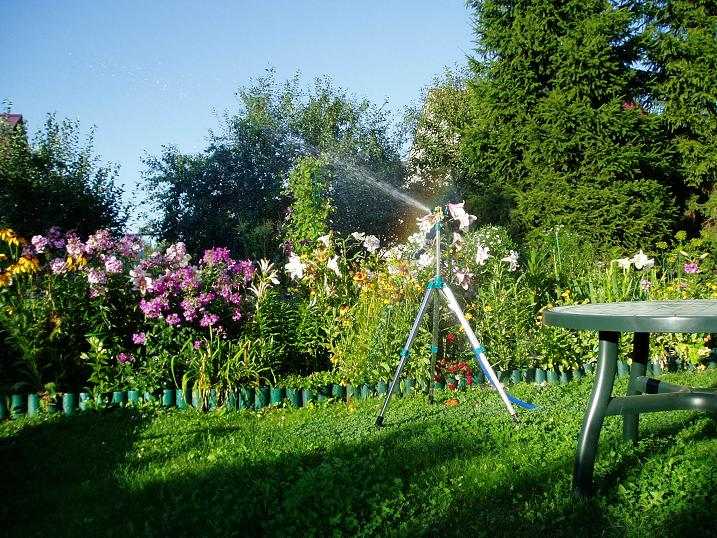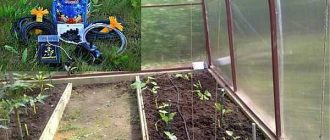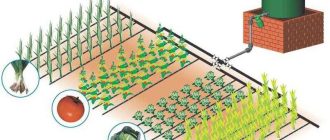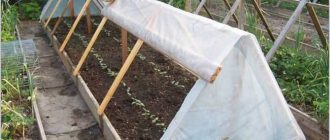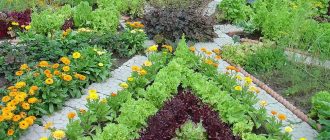Gardens, vegetable gardens, flowerbeds, lawns – everything needs regular watering. Ordinary water pumps do not always cope with this task – watering has its own peculiarities, so the pump for watering the vegetable garden, garden, flower beds and lawns is selected separately, using a completely different approach.
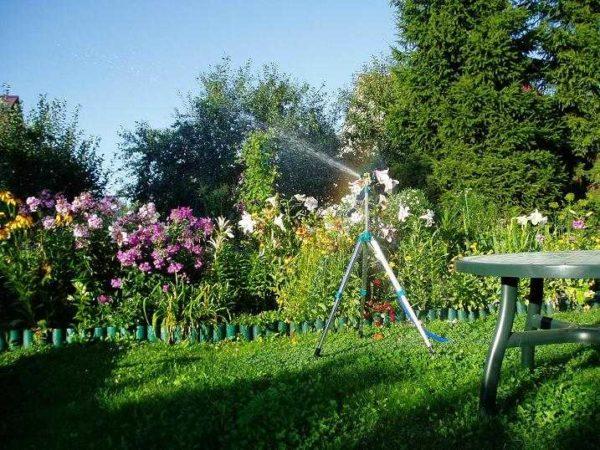
文章内容
Water source and categories of irrigation pump
On the choice of a pump for watering a vegetable garden depends largely on the source of water. It can be:
- well;
- well;
- river, pond, swimming pool;
- tanks and barrels.
In the case of well and borehole will determine the technical characteristics – it is necessary that the water with proper pressure was delivered to the place of irrigation. Models – in principle any. Choose to your taste.
If we are talking about a river pond or swimming pool, then to the technical characteristics are added requirements for the degree of water pollution. If the pool water can still be considered conditionally clean, then in the river or pond pollution will be enough, so that conventional equipment is not suitable. Conventional models in this case will not work, as they are designed for clean water. Contaminated water can pump drainage and garden pumps. Here among these categories and it is worth looking for a pump for watering the vegetable garden in this case.
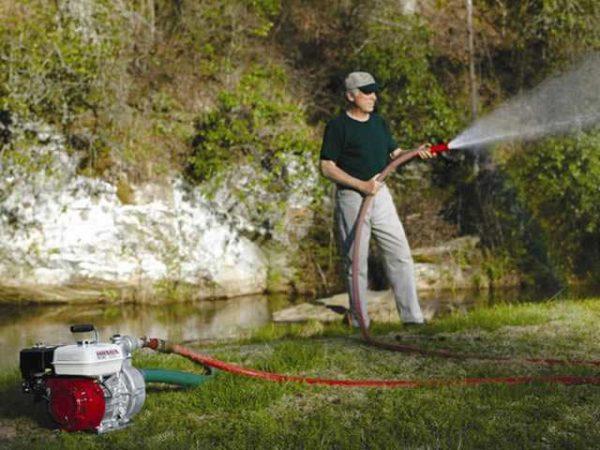
When watering from tanks and barrels, the task becomes even more interesting. The water in this case is also not clean, so that drainage pumps are suitable, but not any, and the most low-powered. It’s all about the volume of water that can be contained in the barrel. With a large capacity of 200 liters of water, a medium-power pump will pump out for 1-3 minutes. Pour during this time you will have time to pour a little, and the water is already gone. Therefore, and the best in this case, the most low-powered (they are at the same time and the cheapest). Only when buying, pay attention to the pump went with a float sensor of the water level. If there is very little water left, this sensor will cut off the power.
Some companies produce special pumps for barrels. They are just and are characterized by small capacity and the ability to pump dirty water, have small size and weight, but the price is more expensive than similar drainage. But the barrel pump for watering the vegetable garden is compact and lightweight.
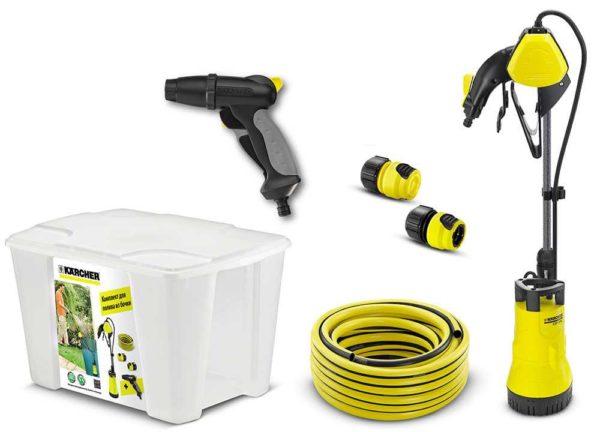
By the way, it is easy to solve the problem of quickly running out of water in the barrel. There are usually several of them on the plot. Just above the level of the bottom you can weld fittings with taps and connect all the barrels with pipes. So you can pump water from all the barrels without transferring the hose.
Types of pumps, their advantages and disadvantages when used for irrigation
Choosing a pump for watering the vegetable garden is not an easy thing – it is necessary to determine many parameters, take into account the features of pumps and water sources. Choose the right “pair” so that you were comfortable to water, and the equipment worked in normal, not emergency mode.
潜水式
Submersible pumps can be used to pump water from any source of sufficient volume – well, borehole. Pumping from a pond and river even with a sufficient amount of water is problematic – the water is not clean, and conventional models only with it and feel normal. With a very great desire, you can make a chamber-filter, in which to place the pump itself. But this is also a controversial option – the walls of the chamber can tear or clog.
In wells or boreholes, you can use both vibrating and centrifugal submersible pumps. The difference is that centrifugal can “deliver” water over long distances and lift from great depths. Vibratory have more modest characteristics, a smaller resource, more demanding to water purity, but the price for them is much lower. This explains their popularity.
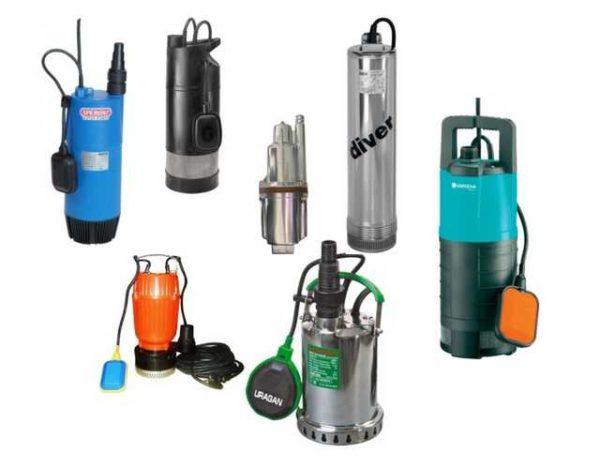
About the river and pond have already said, there are still tanks. In a barrel or Eurocube centrifugal unit will not be put at all – it will pump it out in a few seconds. Vibrating will create a very strong rumble, although “pull” the water will be a few minutes. But the rumble is such that neighbors may come. So it is also not very suitable for such working conditions.
So, for a submersible pump for watering the vegetable garden is suitable if the water source is a well or well without sand.
Drainage
Drainage pumps are mostly of the submersible type. What distinguishes them is the ability to work with turbid and polluted water. In this regard, drainage pumps are used just for watering the vegetable garden from open water sources – rivers, ponds, etc.
But just remember that dirty water is not cassava and tina, but water that contains solid particles with a size of no more than 5 mm. But some manufacturers define other limits for their equipment – often the size of particles should not exceed 3 mm. Therefore, if the water body is heavily polluted, you need the same chamber with mesh walls, which will hold large contaminants. If you do not want to bother with this, and the water is really dirty, you can use not a drainage pump for irrigation, but a fecal pump. He can pump even sludge. There are models with a pulverizer, which fall large objects grind in seconds.
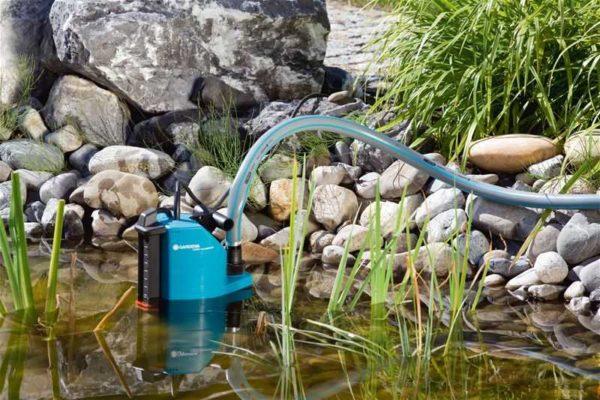
So, a drainage pump for watering the vegetable garden is good if the water has a significant amount of impurities, but all of them are no more than 3-5 mm. With large impurities, it is more appropriate to use a fecal unit.
Barrel pumps
Another type of submersible pumps, designed specifically for irrigation from small containers – barrel (barrel) pumps. They have a small capacity, low power and size, low noise level. When the water level in the container decreases, they gradually raise the pressure so that the pressure at the outlet remains stable. In general, such a pump for watering the vegetable garden is a good purchase, but…if you are satisfied with the price.
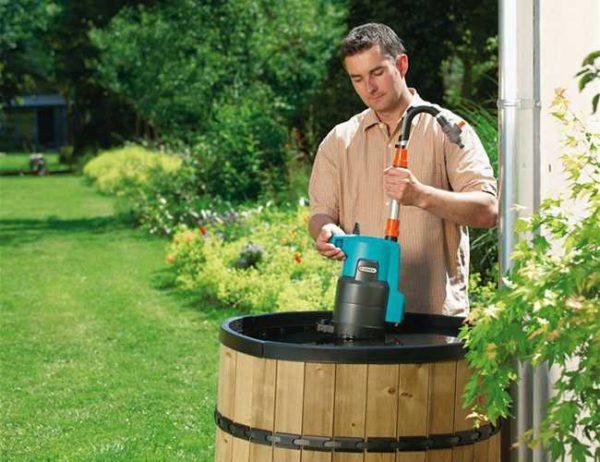
The inlet of the barrel pump is closed with a mesh – a filter from large contaminants. But this is far from always enough. If there is a lot of dirt in the barrel, an additional filter is made. You can even put a piece of gauze or other mesh fabric (old tulle, for example) into the barrel, fix it so that it does not reach the bottom a little. The unit can be lowered into this cloth. In this case, it will work longer without maintenance (it is necessary to periodically clean from dirt that accumulates inside). The fabric will not be drawn inside when working – there is a mesh there, so the option is quite capable.
External
For watering the vegetable garden from the river or pond, external pumps are more suitable. Only the hose is lowered into the source, and the unit itself remains on the surface. Just note that the hose must be reinforced – the usual one will simply flatten the negative pressure created during operation.
To the disadvantages of this type of equipment can be attributed their weight – they are usually quite heavy, which creates difficulties in carrying. Their body is made of steel or cast iron, and it is clearly not light. To eliminate this disadvantage, special garden pumps were invented. Their body is made of plastic, which makes them much lighter – even a woman can easily handle carrying them. In addition, garden pumps are better adapted for pumping not quite clean water. So for watering the vegetable garden from the river it is not a bad choice.
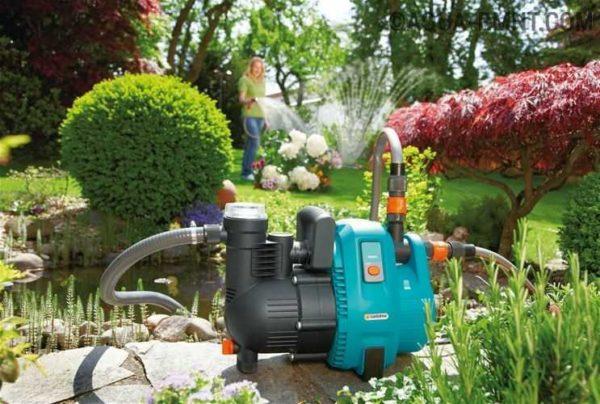
In working with outdoor suction pumps there is one nuance: in order to start them, it is necessary to fill the pump itself and the hose with water beforehand. Outdoor pump for watering the vegetable garden by the method of operation can be self-priming, then “fill” it is necessary a little – only the container in the pump, and this is a few hundred milliliters. If the model is normally suction, it is necessary to fill the entire hose and the capacity of the unit, and this can be not one dozen liters. Since watering is a periodic action, each time to refuel such a system is tedious. Therefore, for watering the vegetable garden use self-priming outdoor pumps or look for something else.
There are outdoor pumps vortex (centrifugal), but they are suitable only for clean water. That is, they are another option for a well or borehole, but with a shallow depth. Their plus is that they do not need to be primed, although by weight – heavy to carry from place to place is problematic.
Pumping stations for watering the vegetable garden
If desired, you can use for watering the vegetable garden not a pump, but a pumping station. This is, in principle, an ideal option – the pressure is stable, and it can be adjusted within fairly wide limits, the motor at the same time works in the normal mode – on and off. But there are no disadvantages. Pumping stations are usually equipped with surface pumps for clean water. They will have to be primed before starting, that’s two. They are heavy – this is three. And the price is not always happy – this is four.
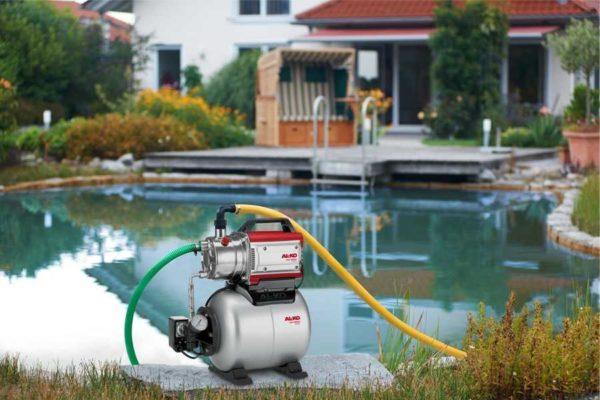
True, if desired, you can assemble the station yourself, and on the basis of any pump (drainage for example). You will need a hydroaccumulator, pressure switch, pressure gauge and pivovyvodnoy nipple or a set of flexible connections with nuts of suitable diameters. You can also assemble the whole system on polypropylene or plastic, whoever is used to it. It is not so difficult, so it is realistic to understand.
Requirements
Choosing a pump for irrigation, it is necessary to take into account the specifics of the work of these devices. It is still significantly different from the working conditions of ordinary ones that are used for water supply at home.
性能
Watering the vegetable garden can be an aggregate of any type, but there is one nuance: the power must be selected so that when using attachments (watering gun, sprinkler, etc.) does not tear off the hose. And not the most pleasant moment is that a simple root irrigation requires less productivity – a strong jet will simply wash out the soil. When using sprinklers or watering guns, the pressure must be greater – to capture a larger area.
The only acceptable way out is to put a tee on the output of a pump of decent capacity. To one outlet connect a hose for irrigation, to the second through a valve hose, which will divert part of the water back to the source. With this connection, adjusting the amount of water returned by the valve, it will be possible to change the irrigation pressure, and in a wide range.
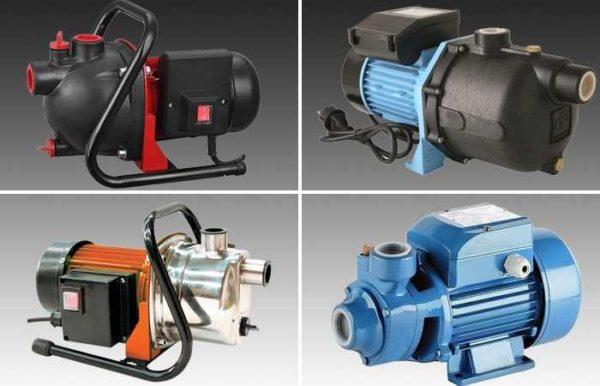
Very useful such a system when watering from barrels. When using even conventional drainage drums are pumped out very quickly. This trick with the return of water allows you to stretch the supply and water a large area.
If you look for a pump for watering a vegetable garden with a small capacity, you will find that units of good brands with low power are difficult to find. If they are, they are at a high price. But there are a lot of cheap Chinese pumps of small capacity, which in addition are designed for pumping dirty water. This is just the option you need for irrigation from a barrel, pond or river. True, the percentage of defects they have a high – 20-30%.
Solutions in this case are two – to buy a cheap pump, if necessary, buy a new one. The second way out is to reduce the productivity of a normal unit. You can do this by installing a smaller diameter hose at the outlet. But for the pump it is bad – it will work, but the rate of wear will increase significantly. To improve working conditions, you can lead to the point of irrigation with a hose of the standard size, and only then install an adapter. This is not that it will radically improve the situation, but the water consumption will be less, and the pressure will be strong – you can use sprinklers and other nozzles.
Protection against overheating and dry running
Since the pump for watering the vegetable garden works for a long time, and even more often not in the best mode for him, it is quite possible that the motor will overheat. Therefore, it is very desirable to have overheating protection (thermo relay). A very useful option – when the threshold temperature is reached, the power supply is simply switched off.
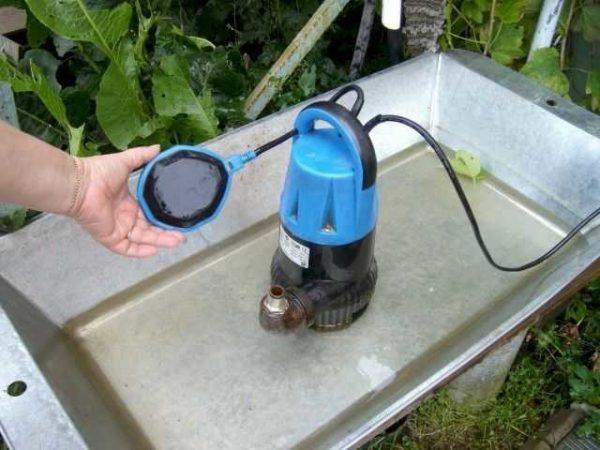
Any water source can run low on water. Even from a well or borehole it can be pumped out. If the pump runs without water for a while, it will burn out – the water also serves to cool the casing. Therefore, put protection against dry running. The most popular, simple, reliable and cheap way – float. This is a water level sensor, which, if there is not enough water, simply cuts the power circuit. There are pumps for watering the vegetable garden, which immediately go with such a device, and if not, it can be installed independently – by connecting the wires from the sensor in the break of one of the supply wires.
Determination of parameters
About the performance has already been determined – it needs a small – about 3-5 cubic meters per hour (this is 3000-5000 liters per hour), which is more than enough for watering the garden and vegetable garden.
What will need to be counted is the head of the pump. This is the amount by which water can be pumped. The head usually consists of two components – vertical and horizontal. Vertical is the depth from which the water will have to be lifted. As it is, so it is – each meter of depth equals one meter of head. Only in the technical specifications for pumps there is such a line as “maximum suction depth”. So, it should be greater than the available depth by at least 20-25%. It is possible to take and flush, but only firm equipment, as the Chinese indicators are usually significantly overestimated.
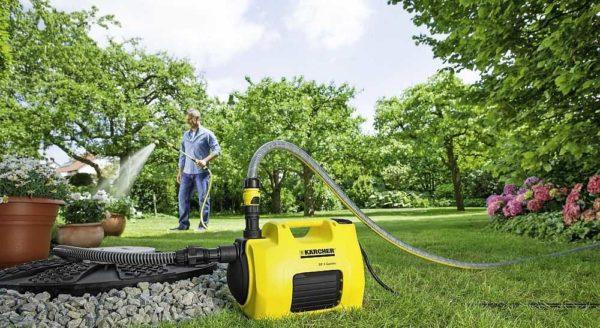
The horizontal component of the pump head is the distance that the lifted water will have to be transported to the place of irrigation (take the farthest point when calculating). When using inch pipe or hose, it is assumed that 1 meter of lift is required per 10 meters of horizontal pipe. If the diameter decreases, the figure becomes smaller – for example in 3/4 inch count 7 meters of pipe/hose for 1 meter of lift.
You will also have to take into account the resistance of pipes (hoses). For this purpose it is necessary to add about 20% to the calculated value.
Example of head calculation. The mirror of water is at a distance of 6 meters from the surface, we will pump from a depth of 8 meters, transfer from the point of intake will need to be at 50 meters. The pipe is inch, so we consider the horizontal head at 10 meters.
So: total head 8 m + 50m/10 = 13 m. Add a reserve for losses at the joints (20% of 13 m is 2.6 m), we get 15.6 m, after rounding – 16 m. When choosing a pump for irrigation look for its maximum head to be not less than this figure.

